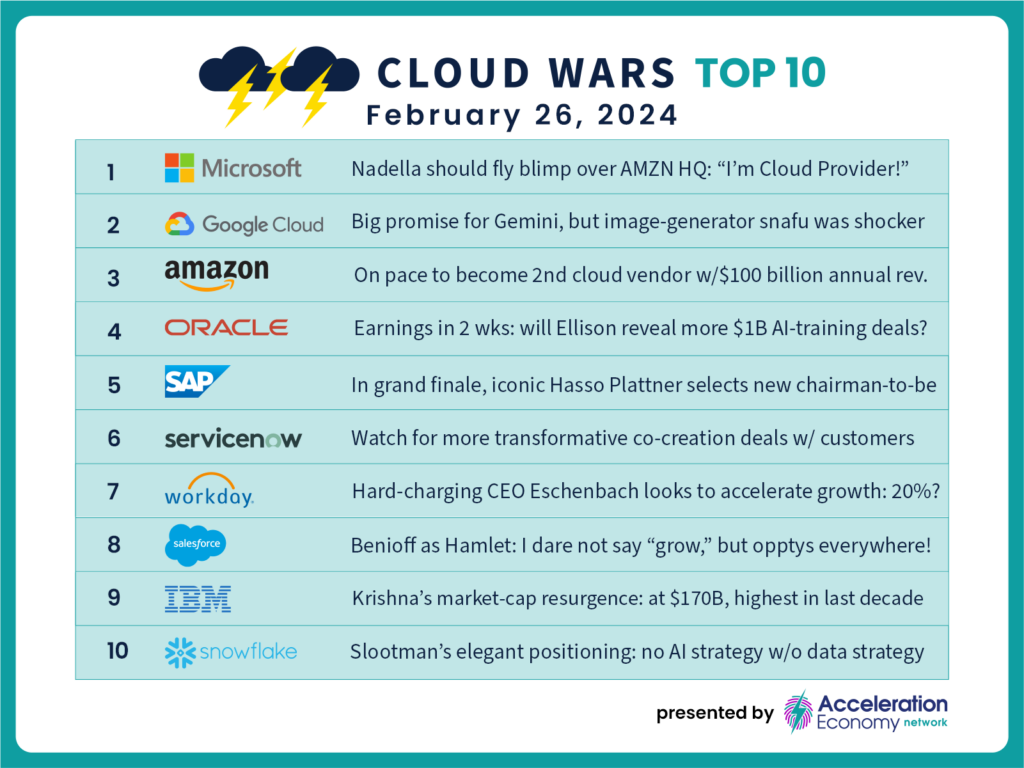
Despite the recent discombobulated efforts of Amazon CEO Andy Jassy to spin that simple question in favor of AWS, Microsoft is by any objective measure the leader in the enterprise cloud — and its lead over AWS has been widening for each of the past several quarters.
Before sharing some numbers that will unequivocally support my contention, I’d like to clarify a few points:
First: While the cloud first came to prominence around infrastructure and particularly compute, storage, and networking services, the modern cloud includes much, much more than infrastructure.
Second: The modern cloud now fully embraces cloud applications of every conceivable kind, solutions, databases, low-code and no-code tools, analytics, data services, cybersecurity, database-migration services, and much, much more.
Third: For some reason, some “experts” have continued to deny this reality and continue to equate “cloud” with “infrastructure,” totally dismissing the software sectors of the cloud that drive the real business value and differentiation for customers. This myopic approach of equating “cloud” with “infrastructure” is a grave disservice to enterprise customers.
Fourth: Because AWS boldy created the infrastructure-as-a-service category, became the unquestioned category king, and continues to be the leader in cloud-infrastructure services, those who believe that cloud is limited to infrastructure thereby believe AWS is the big dog in the cloud.
But that is not the case, and here are the numbers to prove it.
- Quarter ended Dec. 31, 2023: Microsoft Cloud revenue $33.7 billion, AWS revenue $24.2 billion. So Microsoft’s cloud revenue was 39.3% higher.
- Full calendar year 2023: Microsoft Cloud revenue was $124.3 billion for the year, and AWS’s revenue was $90.8 billion. So for the full calendar year, Microsoft Cloud revenue was 36.9% higher than AWS’s.
- Quarter by quarter revenue totals: In case anyone might think there was some outsized quarter that’s distorting reality, check out the relentless size advantage Microsoft has established over AWS, starting with calendar Q1 and moving through calendar Q4: $28.5 billion versus $21.4 billion, a gap of $7.1 billion; $30.3 billion versus $22.1 billion, a gap of $8.2 billion; $31.8 billion versus $23.1 billion, a gap of $8.7 billion; and $33.7 billion versus $24.2 billion, a gap of $9.5 billion.
- Cloud-revenue growth rates for the last 4 quarters: Q1, 22% versus 16%; Q2, 21% versus 12%; Q3, 24% versus 12%; and Q4, 24% versus 13.2%. So not only is Microsoft Cloud revenue already almost 40% higher than that of AWS, the disparity is widening because Microsoft is growing much faster than AWS by winning more new customers and by securing bigger deals from existing customers.
Ask Cloud Wars AI Agent about this analysis
Final Thought
AWS remains a remarkable company and an extremely important technology partner to companies large and small across the world. Based on its Q4 revenue of $24.2 billion, it will almost certainly top $100 billion in 2024, and will no doubt remain one of the world’s great technology companies with a highly ambitious AI portfolio starting to hit the market.
That’s why it’s so puzzling to me that Amazon CEO Jassy felt the need on the company’s Q4 earnings call earlier this month to try to claim that AWS generated more new cloud revenue quarter-over-quarter than did Microsoft by suggesting that Microsoft is not really a “cloud provider.” (You can read all the details of that bizarre attempt in “Amazon Shocker: CEO Andy Jassy Denies Microsoft Is a ‘Cloud Provider’.)
The cloud is not what it used to be, and it does Jassy no good to try to spin the fable that Microsoft’s not really a “cloud provider” because it does so much more than just infrastructure.
No, the Cloud Wars are not about the past as defined by the vendors — rather, they’re about a dynamic and innovation-filled future being created by customers with the high-value help and technology of those vendors.
And that’s why I believe it’s important to clarify the facts on who’s #1 in the cloud.












